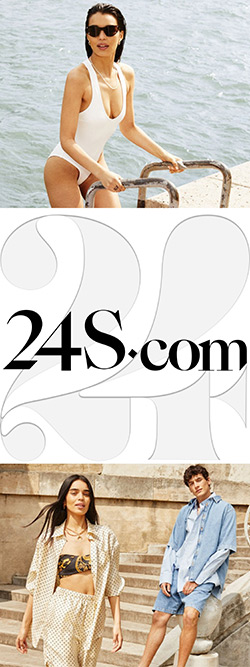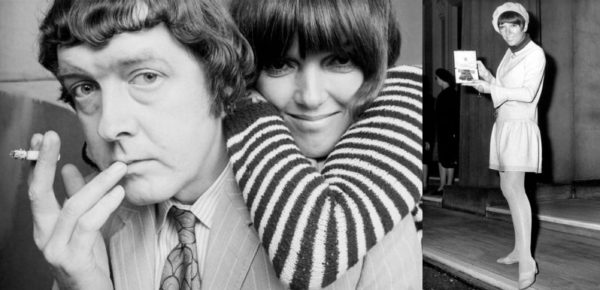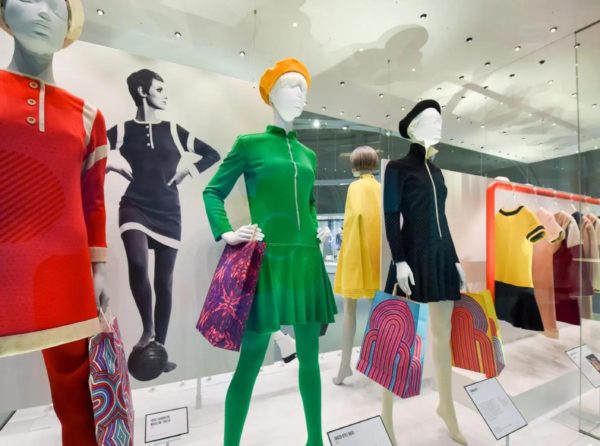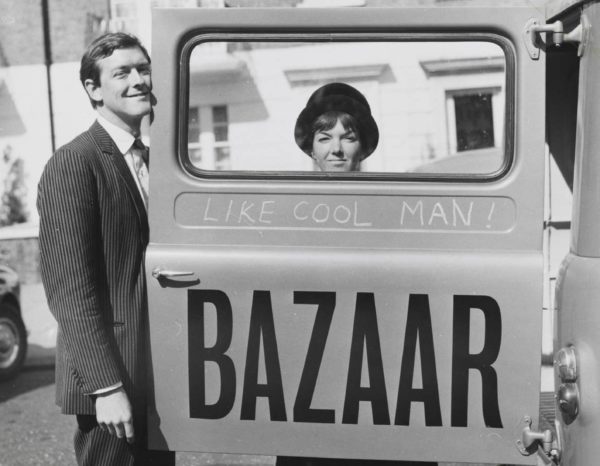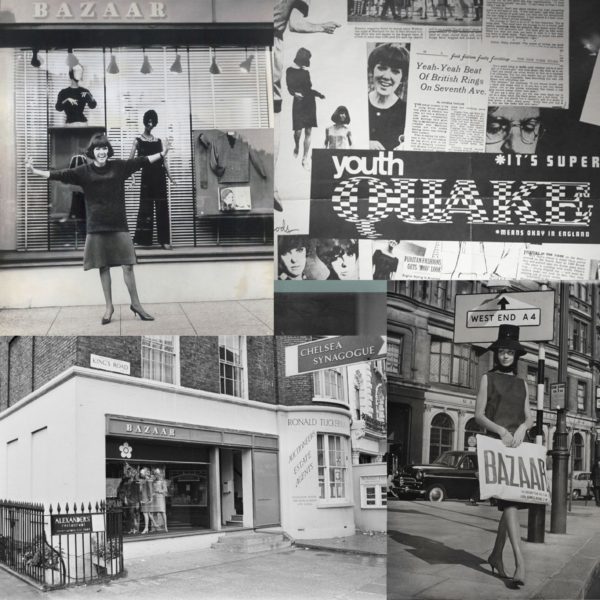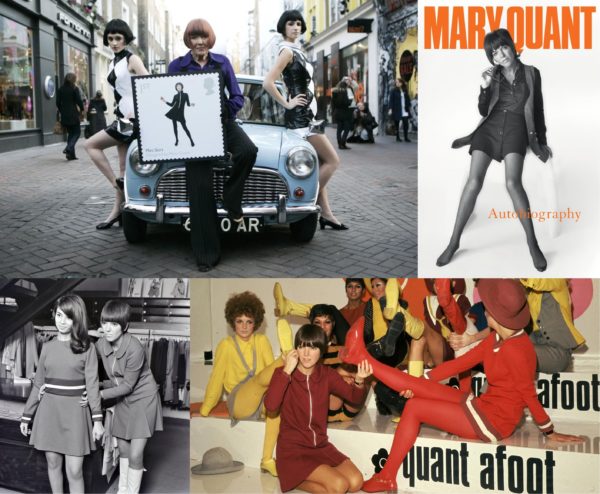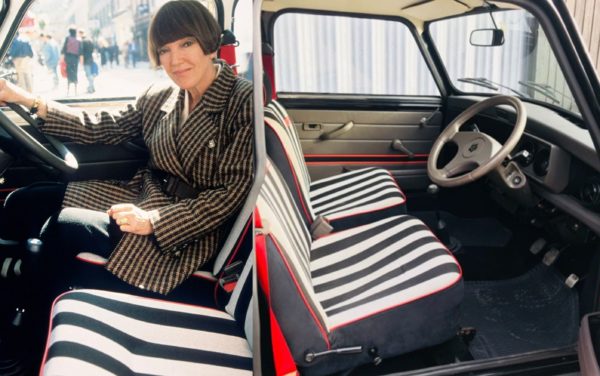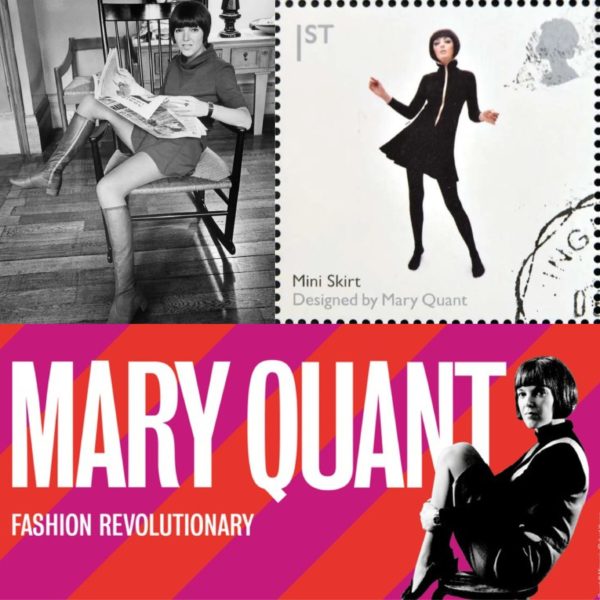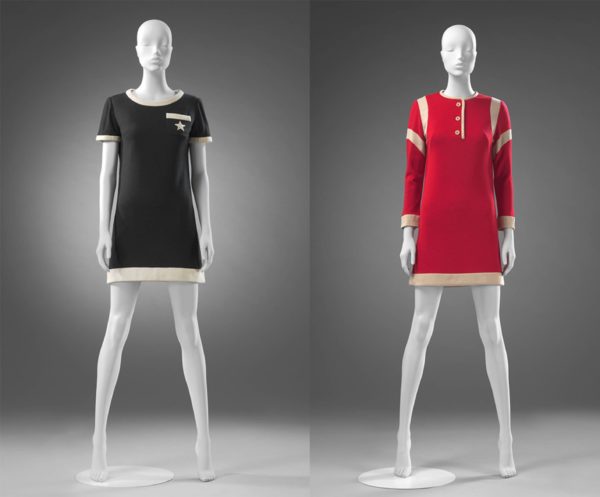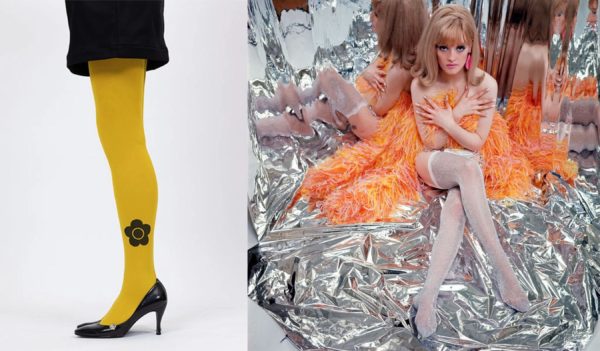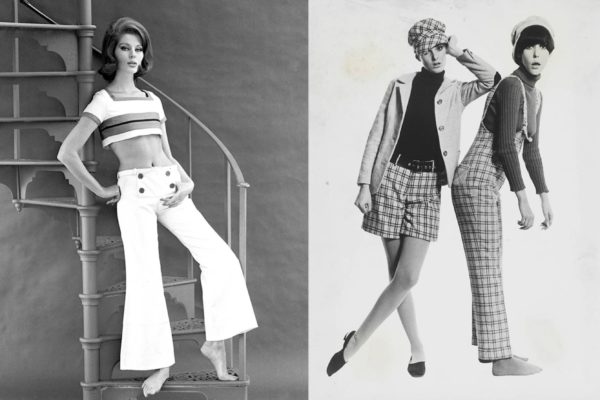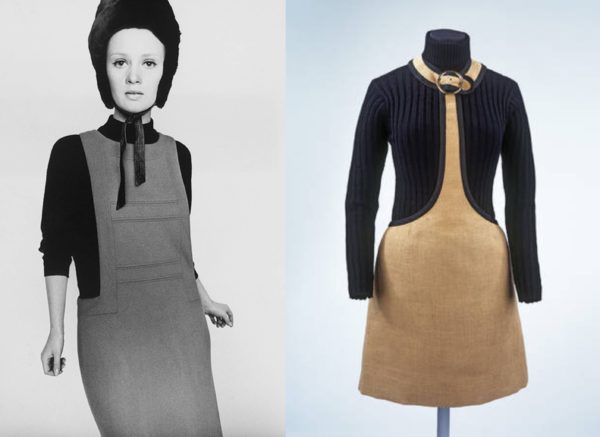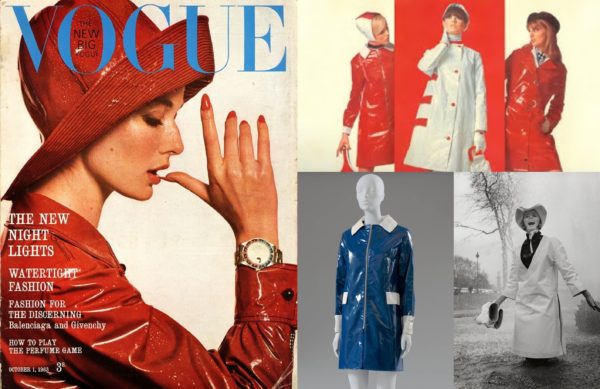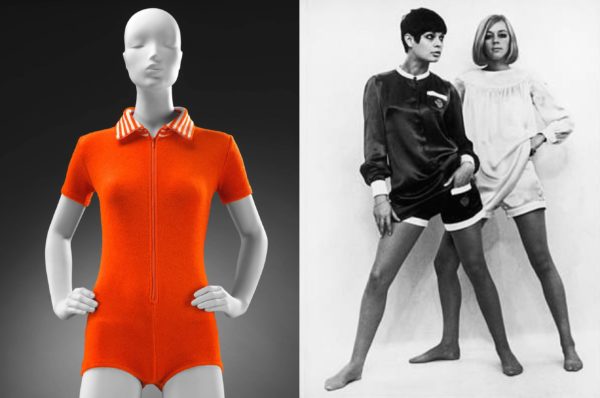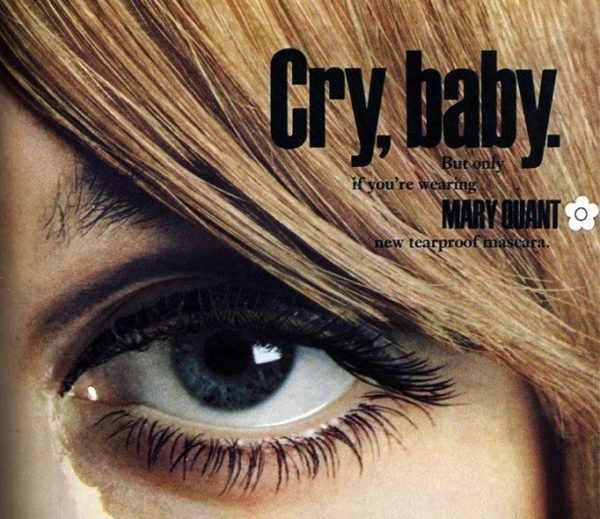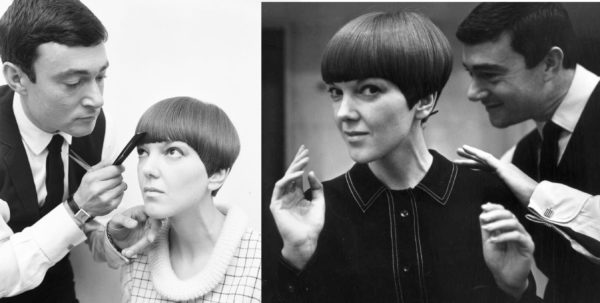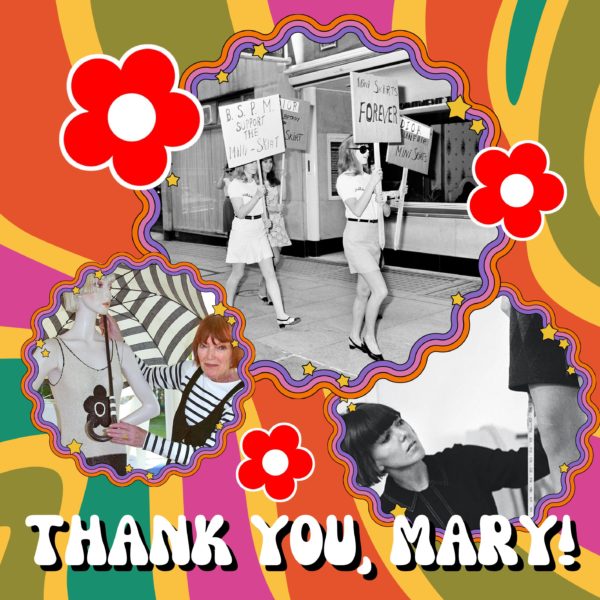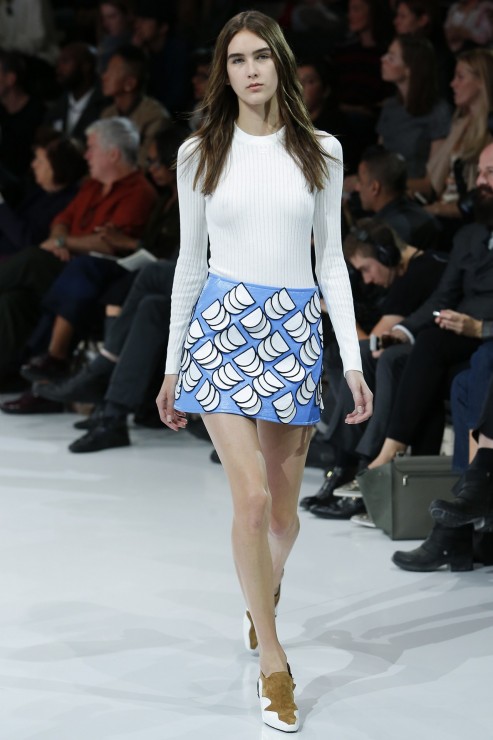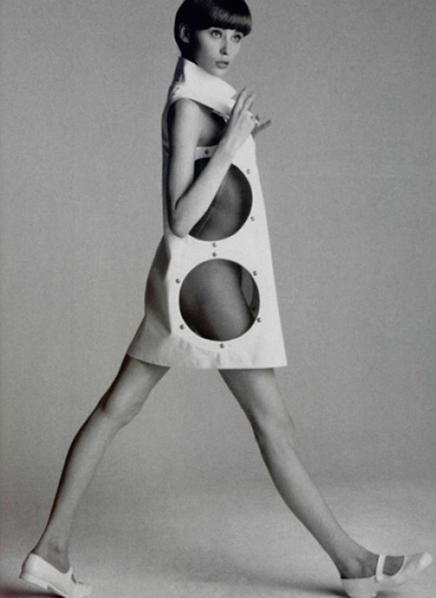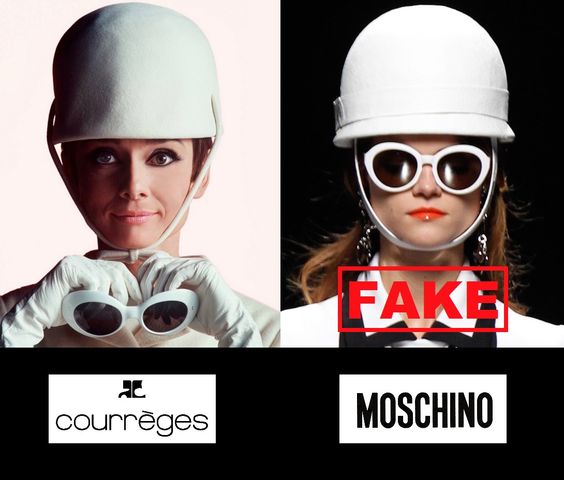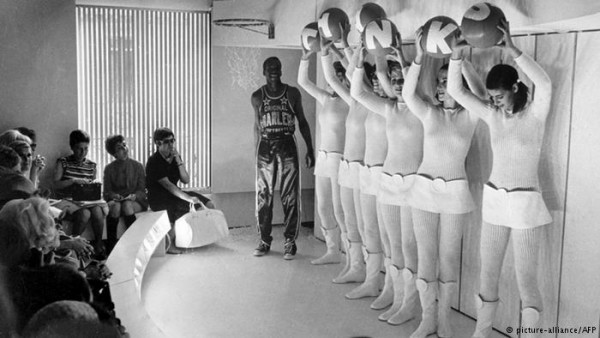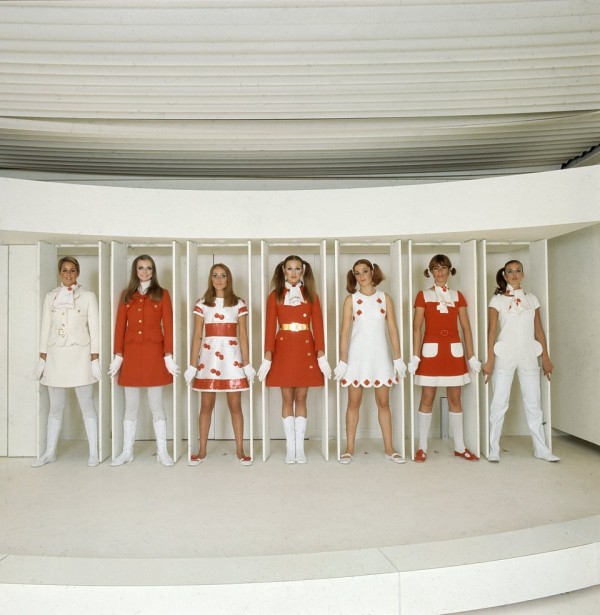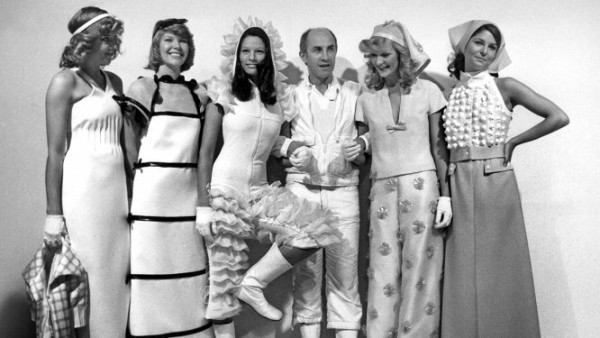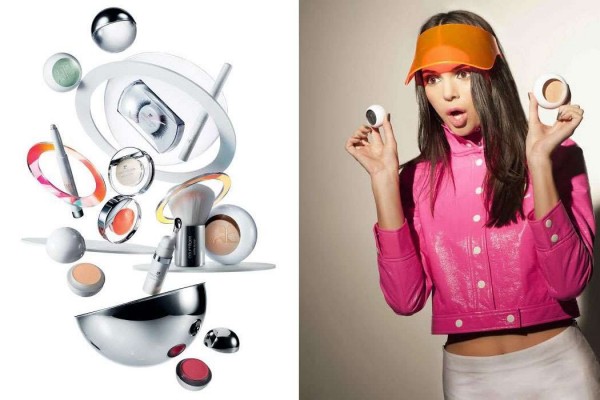Mary Quant (Feb 11, 1930 – April 13, 2023), one of the most influential figures in the fashion scene, died at age 93 peacefully at home in Surrey, UK. Being credited with making fashion accessible to the masses with her sleek, streamlined and vibrant designs, she is also known as the pioneer of the mini skirt and hot pants. While this claim has been challenged by others, it became the trademark of her style, and she is cited as the inventor of this style. However, Mary Quant liberated more than just our legs. Her real legacy was more profound, and her vision of female freedom still feels as fresh as it did back in 1955.
Dame Mary was the daughter of two Welsh teachers but was born in Blackheath, London, in 1930. She gained a diploma in the 1950s in art education at Goldsmiths College, where she met her husband Alexander Plunket Greene, who later helped establish her brand and with whom she married until his death in 1990. The couple had a son, Orlando, who was born in 1970. In 2014, she was made a dame for services to British fashion in the Queen’s New Year Honours list.
The V&A Museum, which hosted an exhibition about Dame Mary’s designs in 2020, wrote: «It’s impossible to overstate Quant’s contribution to fashion. She represented the joyful freedom of 1960s fashion, and provided a new role model for young women. Fashion today owes so much to her trailblazing vision.»
Quant initially sold clothing sourced from wholesalers in her new boutique in the Kings Road named Bazaar, that she had opened in 1955. Being the first concept store in the world, she created a special environment, including music, drinks, and long hours that appealed to young adults. A groundbreaking service at that time – this environment was unique for the industry, as it differentiated from the stale department stores and inaccessible high-end designer store environments that had a hold of the fashion market.
The bolder and more unique pieces in her collection started garnering more attention from media like Harper’s Bazaar, and an American manufacturer purchased some of her dress designs. Because of this attention and her personal love for these bolder styles, she decided to take designs into her own hands. Initially working solo, she was soon employing a handful of machinists; by 1966 she was working with a total of 18 manufacturers. A self-taught designer inspired by the culture-forward «Chelsea Set» of artists and socialites, Quant’s designs were riskier and more unique than standard styles of the time.
Dame Mary named the mini skirt after her favourite make of car, recalled its «feeling of freedom and liberation» . She said: «It was the girls on King’s Road who invented the mini. I was making clothes which would let you run and dance and we would make them the length the customer wanted. I wore them very short and the customers would say, ‘shorter, shorter’.»
In 1988, Quant designed the interior of the Mini (1000) Designer (originally dubbed the Mini Quant, the name was changed when popularity charts were set against having Quant’s name on the car). It featured black-and-white striped seats with red trimming.
Quant’s designs revolutionized fashion from the utilitarian wartime standard of the late 1940s to the energy of the 1950s and 1960s’ cultural shifts. Modern fashion owes a great deal to the trailblazing 1960s designer Mary Quant. She stocked her own original items in an array of colours and patterns. From skinny-rib sweaters, to coloured tights and ‘onesies‘, you will be amazed that Dame Mary also revolutionized the high street with trousers for women, as well as accessories, tights and make-up, while using the daisy brand design that became synonymous with her creations. Quant looks changed the way we dress, proving there was more to Mary than just miniskirts.
Here are some things that you might not know about that are credited to Mary Quant:
THE JERSEY DRESS
Quant saw the potential for easy jersey garments as outerwear in the ’60s. Leading then the jersey dress boom by producing thousands of designs in hundreds of different colors, including different shaped collars, sleeves, zips and buttons, with skirts swishy or straight, the jersey dress became a driving force in the democratization of style.
TIGHTS
Where would the modern women be without stretchy tights, in black, or a choice of colours? Sixty years ago, most women were still unquestionably wearing stockings in the shade «American Tan» (black stockings were a hangover from the Victorian era). Held up by garters, or attached to a separate suspender belt with hard metal clips, stockings were fiddly and uncomfortable to wear. Skirts meanwhile fell below the knee to keep all this hardware, and naked thighs, firmly hidden from view. Mary Quant, always looking to develop new ideas, wanted stockings and tights in bright colors, such as mustard yellow, ginger and prune, as well as black – the perfect accompaniment to her knee-skimming skirts and dresses which enabled women to dance, run and move. She partnered with the Nylon Hosiery Company, set up in 1954 by the Curry family, who had recently emigrated from India. They developed a technique of making long stockings which joined together at the top, and were specially dyed to contrast and co-ordinate with Mary Quant separates. The partnership proved to be long-lived, with an ever-expanding range of new colours and patterned knits, including the 1966 «Highball» glitter stockings in silver, gold, green, blue and red.
TROUSERS FOR WOMEN
From skinny jeans and culottes to harem pants, bell bottoms and power suits, trousers have been an essential part of fashionable women’s wardrobes for over 50 years. This was thanks largely to Mary Quant, who was one of the first designers to promote trousers and suits as fashionable womenswear. When Quant opened her famous boutique, Bazaar, trousers and jeans were popular with female students and subcultures on the outskirts of mainstream fashion. Appropriating trousers for women remained a strong theme throughout Quant’s career, as she pushed towards an increasingly androgynous look, playfully challenging established gender norms.
THE SKINNY-RIBBED SWEATER
As with many of Quant’s designs, the inspiration for the skinny-rib came from childrenswear. In her 1966 autobiography, she describes how she «pulled on an eight year old boy’s sweater for fun» and was «enchanted» with the result. Six months later, Quant had put the skinny-rib into production and «all the birds were wearing the skinny ribs». Pinafores paired with sweaters were the building blocks of Mary Quant’s Ginger Group – the wholesale label she set up in 1963, which promoted good-value, mix-and-match separates.
PVC RAINWEAR
In the 1960s, Quant was «bewitched» by polyvinyl chloride (PVC), «this super shiny man-made stuff and its shrieking colours… its gleaming liquorice black, white and ginger.» (Quant by Quant, 1966). The plastic-coated cotton was a new material in the fashion world, having previously only been used for protective garments. Quant launched her «Wet Collection» in April 1963 at the Hôtel de Crillon, Paris, featuring entirely PVC garments. The show was attended by influential fashion editors, and it earned the designer her first magazine cover for British Vogue, featuring a brilliant-red PVC rain mac.
LOUNGEWEAR AND HOT PANTS
Writing in 2012, Quant recalled how she discovered the «house-wear» market in the US around 1965 and decided to bring this new concept to Europe. She designed «a collection of jersey tops and hotpants in striped jersey-knit fabrics with matching bras, pants, socks, leg warmers and minis – all using knitted fabrics of various thicknesses and weights». The idea of special clothes for lounging in at home was quite a change in mindset for most of the British public – who only had the ubiquitous dressing gown until then. The range included brightly coloured jersey and stretch towelling one-piece suits, with short zip-up versions and full-length styles that included feet. These easy-to-wear garments were the ultimate in comfort and freedom, made in the fun colours that were at the heart of Quant’s brand. Quant’s experiments with loungewear can be seen as the forerunner to the contemporary «onesie» craze.
WATERPROOF MASCARA
Quant also made her mark on the makeup world. Her cosmetics line, with its daisy logo and colorful crayon formulations, shared the same sunny, childlike outlook as her fashion. And she brought the world a truly innovative invention: waterproof mascara.
BOB HAIRCUT
Mary Quant made London swing in the early 1960s. But her look was completed by the liberating geometric haircuts of Vidal Sassoon. In 1964, Vidal Sassoon provided Mary Quant, then 34, with her signature haircut, that is now as closely associated with Quant as Sasson. The Bob is the most trending hairstyle at the moment again.
One of the most important figures in fashion, Quant’s influence can still be seen on catwalks. Rest in Peace, Mary, thank you!
LoL, Sandra
Photos: © Mary Quant, V&A, AP
DISCLOSURE: We may earn commission from links on this page, but I only recommend products I love. Promise!


